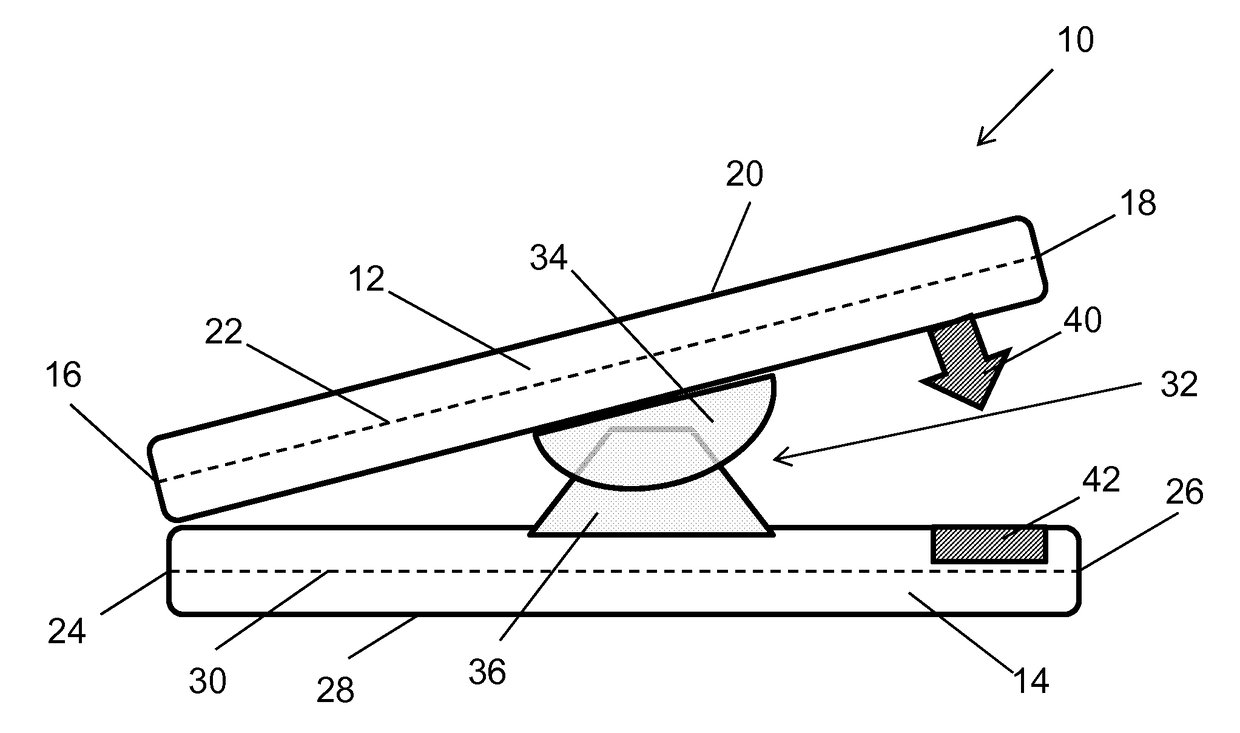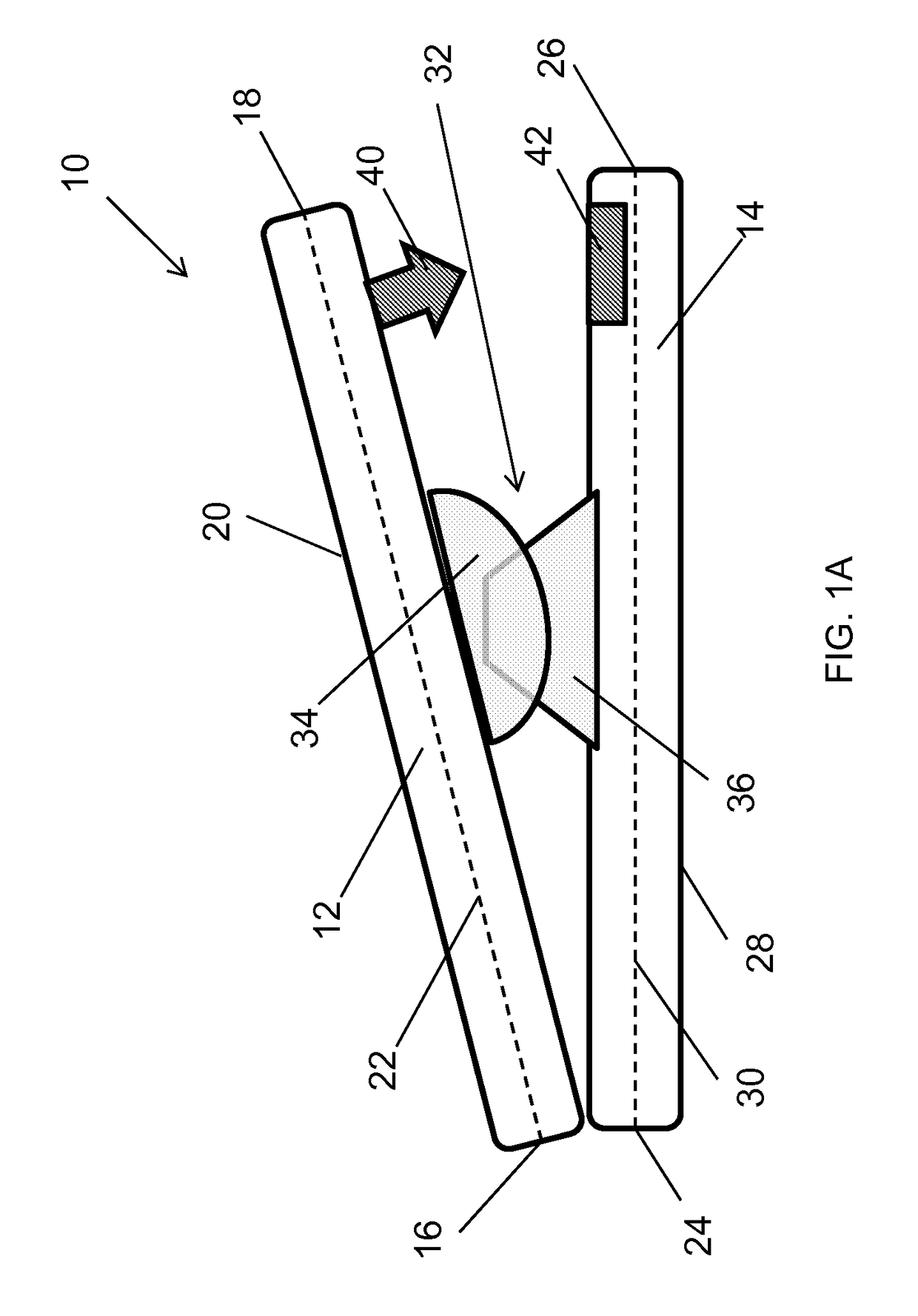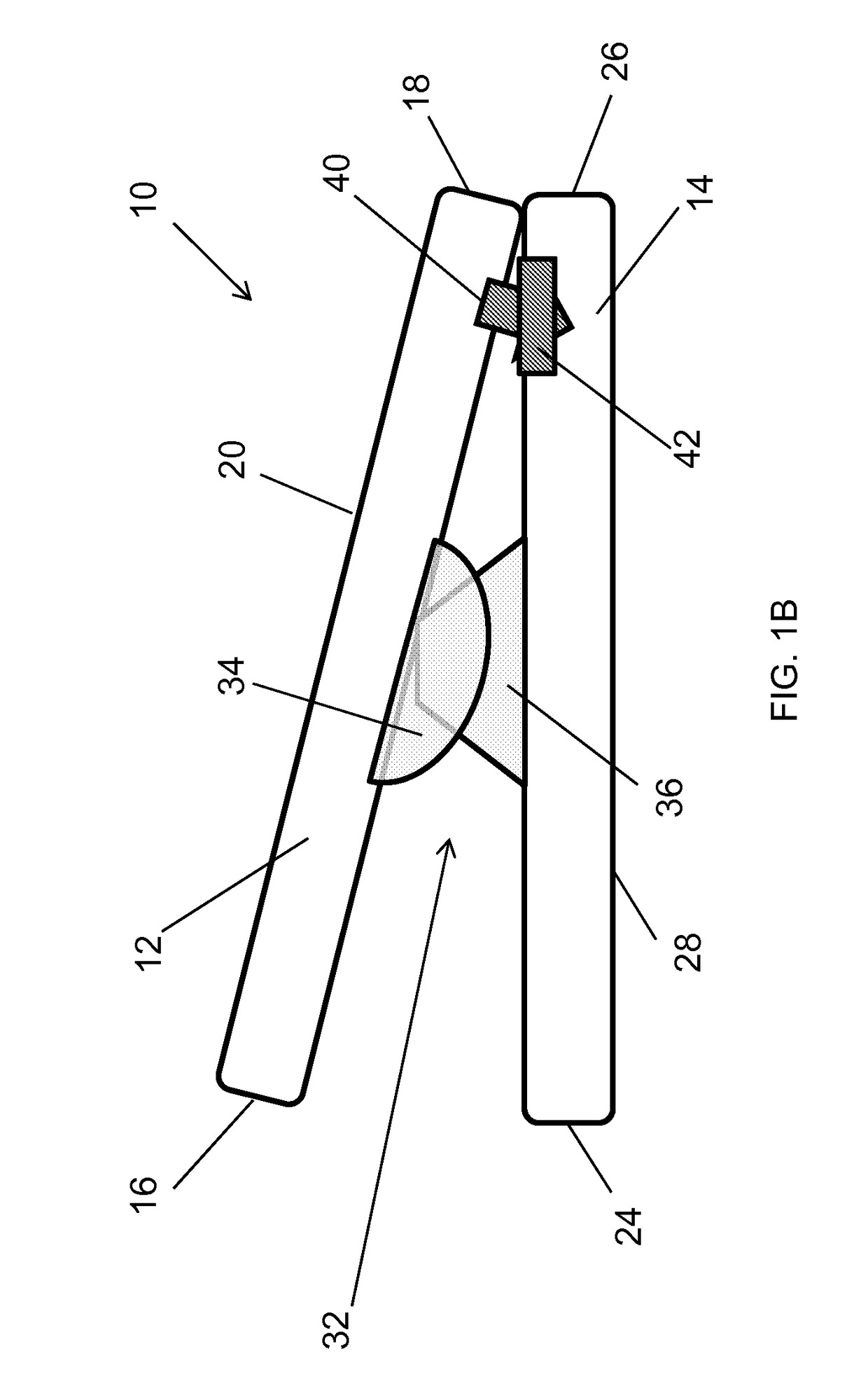Spinal Fusion Apparatus
a technology of spinal fusion and apparatus, which is applied in the field of orthopedic surgery and neurosurgery, can solve the problems of spinal deformities, inadequate lordosis, and the technique of anterior-posterior fusion and posterior alone operations can be predisposed to flat back deformities, so as to minimize the height, minimize the height, and maximize the anterior height
- Summary
- Abstract
- Description
- Claims
- Application Information
AI Technical Summary
Benefits of technology
Problems solved by technology
Method used
Image
Examples
Embodiment Construction
[0034]FIG. 1 is a schematic side view of an interbody spinal fusion cage 10 according to aspects of the instant disclosure. As will be discussed in detail below, interbody spinal fusion cage 10 is configured such that it will achieve lordosis when placed between two vertebrae via a posterior approach.
[0035]Interbody spinal fusion cage 10 includes a superior member 12 and an inferior member 14. Superior member 12 includes an anterior end 16, a posterior end 18, and a superior bearing surface 20 that extends along an axis 22 (shown in dashed line) between anterior end 16 and posterior end 18. Similarly, inferior member 14 includes an anterior end 24, a posterior end 26, and an inferior bearing surface 28 that extends along an axis 30 (shown in dashed line) between anterior end 24 and posterior end 26.
[0036]Superior member 12 and anterior member 14 are interconnected via a joint 32. As illustrated to good advantage in FIG. 1, joint 32 is connected to superior member 12 at a first point...
PUM
 Login to View More
Login to View More Abstract
Description
Claims
Application Information
 Login to View More
Login to View More - R&D
- Intellectual Property
- Life Sciences
- Materials
- Tech Scout
- Unparalleled Data Quality
- Higher Quality Content
- 60% Fewer Hallucinations
Browse by: Latest US Patents, China's latest patents, Technical Efficacy Thesaurus, Application Domain, Technology Topic, Popular Technical Reports.
© 2025 PatSnap. All rights reserved.Legal|Privacy policy|Modern Slavery Act Transparency Statement|Sitemap|About US| Contact US: help@patsnap.com



